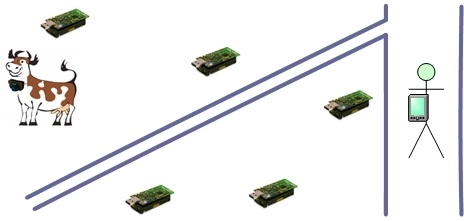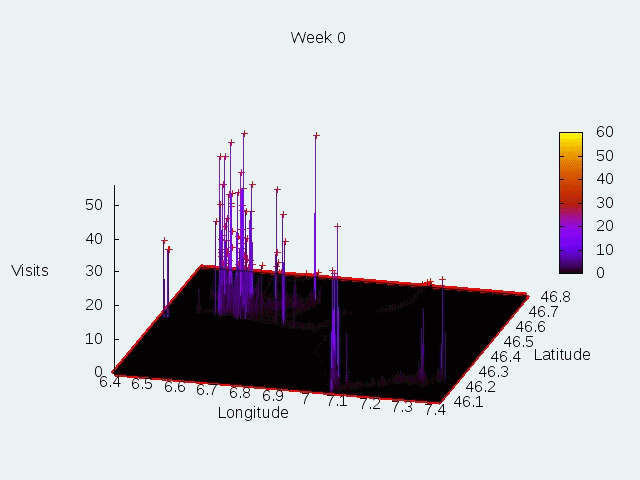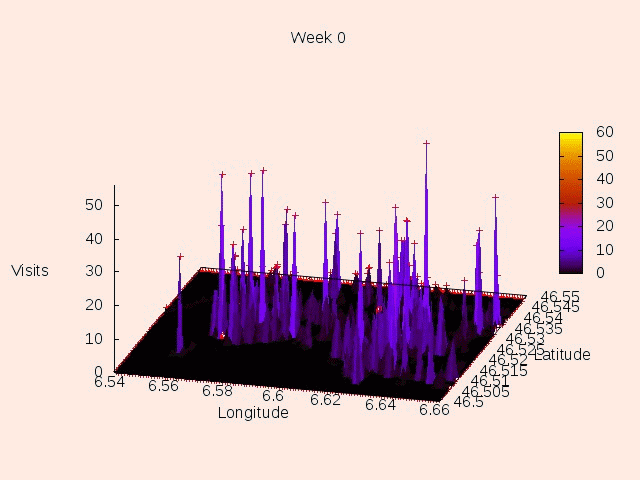As wireless sensor networks mature, we expect to see long-term deployments for applications such as environmental monitoring, house water/gas/electricity meter reading, and structural health monitoring. These applications typically involve large numbers of (static) sensor nodes sparsely deployed in a large area. Sensor nodes in these sparse wireless sensor networks typically cannot communicate directly or even indirectly through multi-hop paths. Under this scenario, deploying large numbers of fixed sink nodes would incur prohibitive costs in terms of deployment, maintenance, and data backhaul.
The use of resource-rich mobile nodes (mobile sinks or mobile relays) had been proposed to move around in the deployed area , collect data from or distribute tasks to sensor nodes. Depending on the application, the mobile nodes can be either part of the external environment or part of the network, and their mobility can be either controllable or not. Here, we assume that mobility is un-controllable. As illustrated in figure 1, mobile nodes could be specific devices carried by objects (animals, employees, etc.) who move around the deployed area for purposes other than data collection. More interestingly, they could also be smart phones (installed with the corresponding radio and software) carried by unrelated people who pass through the deployed area in their daily life. Considering that many wireless sensor networks will be deployed in urban area and their covered areas tend to be overlapped, it should be very promising to use smart phones carried by people, who pass through the deployed area in their daily life, to opportunistically connect sensor nodes with their application servers. In this case, TCO (total cost of the ownership) of wireless sensor networks can also be reduced significantly through exploiting human mobility. Although opportunistic communication may increase the data delivery latency, there are many promising wireless sensor network applications which are delay-tolerant and it is worthwhile to study this topic further.

<Fig.1> Opportunistic Data Collection / Task Distribution
In this project, we have studied the feasibility of using smart phones to opportunistically connect sensor nodes with their application servers. A shared opportunistic infrastructure (SOI) has also been proposed for solving the incentive, user privacy, and data security issues faced by SOI, in which smart phone users must participate. A lot of other challenges have also identified and we have studied the contact probing issues between the smart phones with uncontrollable mobility and sensor nodes that must be aggressively duty-cycled for life longevity.
For the purpose of opportunistic data collection through smart phones, we have studied the mobility of smart phone users based on the data set from Mobile Data Challenge by Nokia. We find that Opportunistic data collection through smart phones should be a very promising solution. The overhead on smart phone can be very low and the mobility of smart phone users could provide satisfying performance to many wireless sensor network applications, especially when sensor nodes are deployed in urban areas. We also find that the mobility of smart phone users does follow some repeated patterns (diurnal, etc.) and the distribution in time and space does have strong localities. When designing the related protocols and algorithms, these localities should be considered and exploited. For instance, a sensor node should try to discover smart phones during rush hours in which smart phones pass by more frequently. Sensor data should also be forwarded to sensor nodes that are visited more often. Due to the existence of seasonal changes, sensor nodes should learn and exploit these localities autonomously. More details can be found in our technical report. Below are two animations that demonstrate how the spatial distributions of GPS readings change with the elapse time.
|
|
|
In the future, we will refine the architecture and design other protocols and algorithms used by entities of SOI. We also plan to implement a prototype of SOI for investigating this topic further. More details can be found in the following documents.
-
Xiuchao Wu, Cormac J. Sreenan and Kenneth N. Brown, "A Shared Opportunistic Infrastructure for Long-lived Wireless Sensor Networks", The 1st International Workshop on Opportunistic Sensing and Processing in Mobile Wireless Sensor and Cellular networks, in conjunction with ICST MobiLight 2011 (pdf)
-
Xiuchao Wu, Kenneth N. Brown and Cormac J. Sreenan, "SNIP: A Sensor Node-Initiated Probing Mechanism for Opportunistic Data Collection in Sparse Wireless Sensor Networks", The 1st International Workshop on Cyber-Physical Networking Systems, in conjunction with IEEE INFOCOM 2011 (pdf)
-
Xiuchao Wu, Kenneth N. Brown and Cormac J. Sreenan, "Exploiting Rush Hours for Energy-Efficient Contact Probing in Opportunistic Data Collection", The 4th International Workshop on Sensor Networks, in conjunction with IEEE ICDCS 2011 (pdf)

